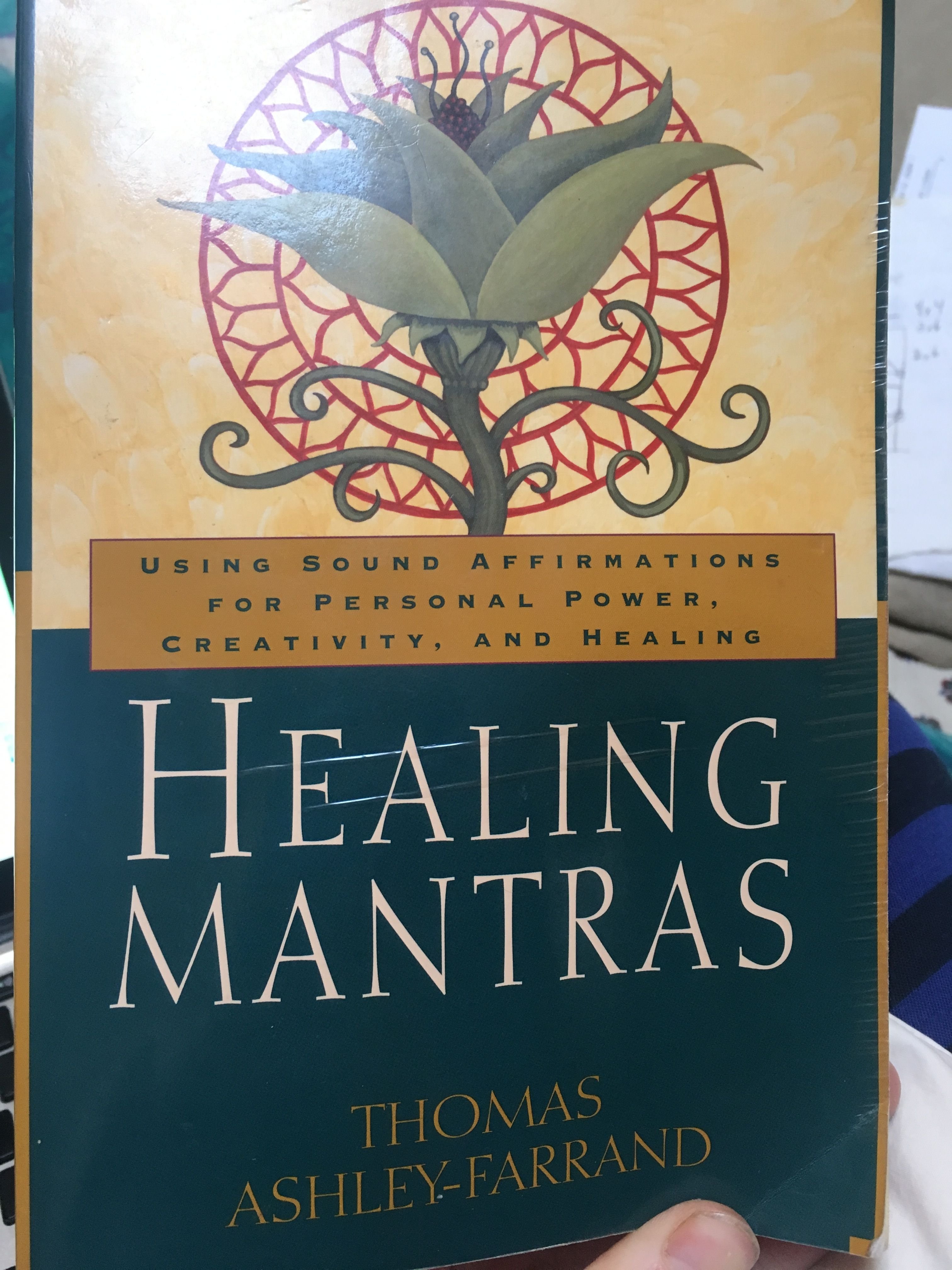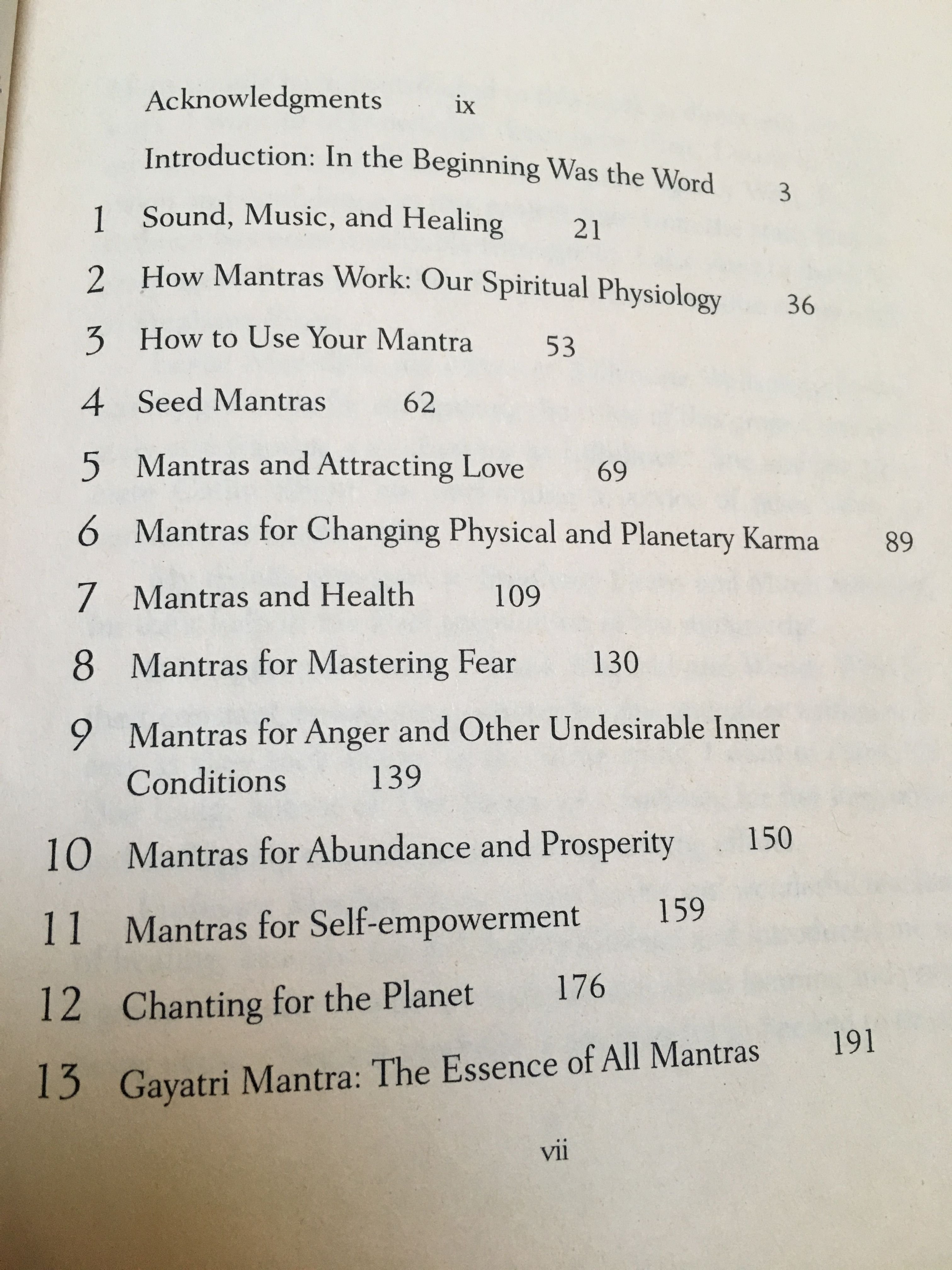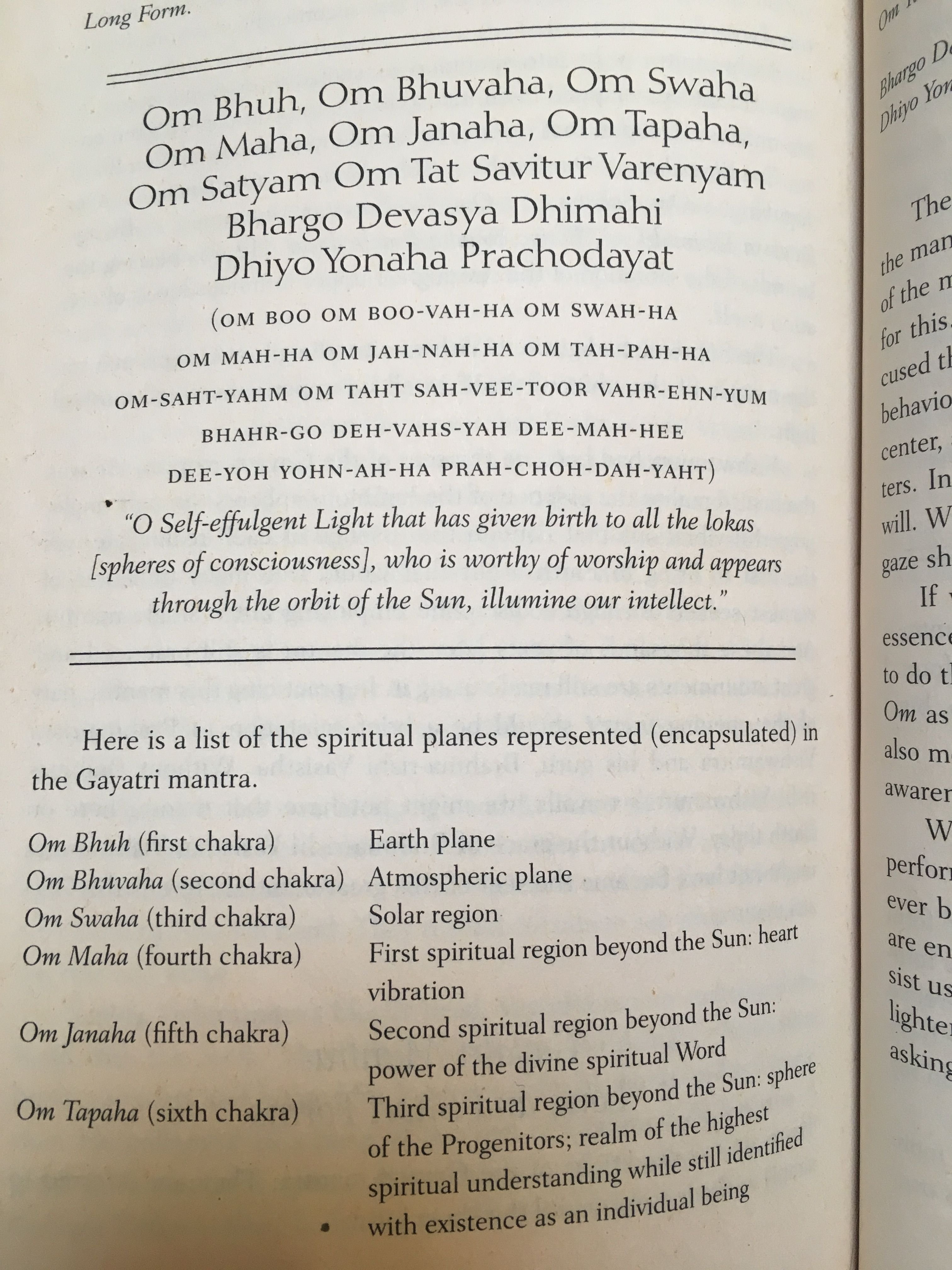In the beginning was the Word…

So starts countless creation tales from traditions the world round.
On today's New Moon in Capricorn, Ini and I are beginning a 40 day mantra and meditation practice. It comes in a time of restoration when there is not much calling us outside in work-mode.
Collectively, we have spent many days piled on days compiled at meditation centers and in personal practice.
But recently we have fallen off on our practice!
We miss the benefits of increased inner peace, simple and basic happiness at being here, clearer mind, more focus, elevated thought, more relaxation, to list a few that come to mind from a consistent practice.
If you’re of a specific faith tradition and you feel yourself freaked out by what I’m saying – perhaps you think meditation and mantra practice, which is a type of rhythmic chanting, is not for you. Do not fret. It’s not some out-there practice, but something that traditions from all over the world have practiced in their own way. If you’re a Christian, look at the Benedictine monks who chant at schedule times throughout the day. Reciting prayers is also a form of meditative chanting.
Indigenous traditions from around the world throughout time include chanting in their day to day life and spiritual practice. From the Aborigines of Australia, the Mbuti of central Africa, the Melanesians of New Guinea, the Native Americans, Jewish Kabbalists and Vedic traditions in India, which is what we’ll focus on in this article.
What is a mantra?
Mantra is a Sanskrit word meaning “tool of the mind,” “divine speech,” and “language of the human spiritual physiology.” Mantras are ulitmately a tool for healing. Healing is defined by Webster’s Dictionary as “to make sound”.
Jonathan Goldman, Director of Sound Healers association explains, “Sound is vibration… and through resonance, it is possible for the vibrations of one body to set another body in motion”. (from Robert Gass’ book Chanting) The body of experience expressed through mantra can be used to tune our bodies to this frequency.
Mantras are energy-based sounds that create particular physical vibrations that have varying effects on the physical and subtle body. They energize prana (or life force energy) – you can even direct this to a specific organ or part of the body to achieve specific healing results.

As Ashley-Farrand says in his book Healing Mantra,
“Just as mantra cleanses and energizes the physical body, mantra repetition has a similar effect on the subtle body. Even speaking a mantra very softly influences the chakras that correspond to the nerve centers of the physical body. Just thinking a mantra- pronouncing it subvocally in your mind- can further the process of clearing away spiritual impurities, energizing the chakras, and burning off karma.”
In the Chanting: Discovering Spirit in Sound, Robert Gass details the numerous benfits that chanting can have on the physical body. He sites medical research that shows that “chanting and other forms of vocalization oxygenate the cells, lower blood pressure and heart rate, increase lymphatic circulation, increase levels of melatonin, reduce stress-related hormones, release endorphins and boost the production of interlukin.”
A study in Paris showed significant reduction or elimination in tumors of women diagnosed with breast cancer by chanting every day for a month. Chanting has shown to positively effect conditions as varied as eating disorders, schizophrenia, hyperactivity, arthritis, heart disease, recovery from sugery and trauma and Alzheimer’s disease. For those interested in diving deeper into how vocal sound can heal, check on The Mozart Effect by Don Campbell.
You can use mantras to help heal yourself and the world. Your intention can go beyond yourself and focus on a certain state of world affairs or human issue. Realize though that you cannot control the outcome of your practice, only state your intention!
Though be aware,
“You may very well find that completely unanticipated positive things come into your life, even if you are doing a discipline for someone else.” (Healing Mantra 61)
“When we practice a mantra we are changing the nature of certain internal and usually crystallized energy clusters. They have become a part of our subconscious mind. They will invariably seek to assert themselves in some way to ensure their continued existence as they are. Continued practice of your mantra will mean that they must change in some way. Thus, some form of internal conflict arises.” (59)
Place
“In addition to saying your mantra as often as possible, you should set a specific place where you will practice your spiritual discipline twice every day.”
Why
Reasons for doing it:
Want to feel the basic human happiness that I’ve felt in times when I’ve meditated a lot. Like waking up in the morning and feeling that crisp happiness to start the day, that excitement to meditate. Feeling more at home in my body.
We want to share this practice and invite anyone who feels drawn to go along with us, wherever you are in the world. We’re stating our intention to do it for 40 days here on steemit to make the intention stronger. The success of a mantra is all about the intention and awareness one puts into it. This will be each of our first times setting an intention to chant for 40 consecutive days!
For 15 minutes each morning we chant the gaaytri mantra then we meditate for 15 minutes.
Same in the evening.
The type of meditation we practice is very simple. It is called Samadhi by some and it is the single attention on something. I choose to focus on the point where the air comes in and out of my nostrils. Breathing regularly, I keep my attention focused as the air goes in and out there. You can feel this sensation if you pay attention to it. You can focus on anything, really, as long as you keep coming back to it. Do not get discouraged if your mind wanders, that’s very natural and expected! Don’t be hard on yourself if this happens, just bring your attention back to the breath. It gets easier with practice, for sure!
If you do a different type of meditation, practice that! The point is to just stick with a practice and do it every day and every night. @eco-alex wrote a fantastic article with more details on meditation and its benefits just yesterday. If you’re interested in learning more about that, I suggest you check it out.
Below I have a picture of all the different categories of mantras listed in the Healing Mantra book by Thomas Ashley-Farrand. If you’d like, I can list a mantra from one of those categories in the comments if you’re interested in making a practice of that and don’t know where to start! From physical health, to spiritual health, to increased focus, success, or relationship healing: there is a mantra!

Please don’t hesitate to inquire about a category if you feel drawn to practicing and don’t feel attracted to the gayatri mantra!
Why did we choose the Gayatri Mantra out of the countless other mantras?

The Gayatri Mantra is considered the essence of all mantras. It is thousands and thousands of years old and has been used with great success. As the author states from his experience, “I have practiced the Gayatri mantra since 1974 and I consider it one of the foundations of my spiritual practice. I cannot recommend it highly enough. The prana becomes energized. The light in the aura becomes brighter and brighter. The beneficial energy comes through you that is helpful to everyone. Attunement to the masters who have gone before you who have also practiced this mantra grows. An ineffable quiet begins to permeate the mind.”
Also the author notes about this mantra,
“First, notice that the syllable OM is used as a prefix to all the mystical words that represent the realms. There is good reason for this. While on Earth, we work with our conscious attention focused through the will. Our will is expressed in our daily decisions and behavior. The biospiritual location of our will is centered at the brow center, a point that is between the eyebrows and raised a few centimeters. In waking life, our eyes are very close to this center of will. When we close our eyes to meditate, this is the place where our gaze should be focused. The seed spiritual sound for this place is OM.” (207)
We’ll be checking back in periodically with our findings and progress. Much love!
